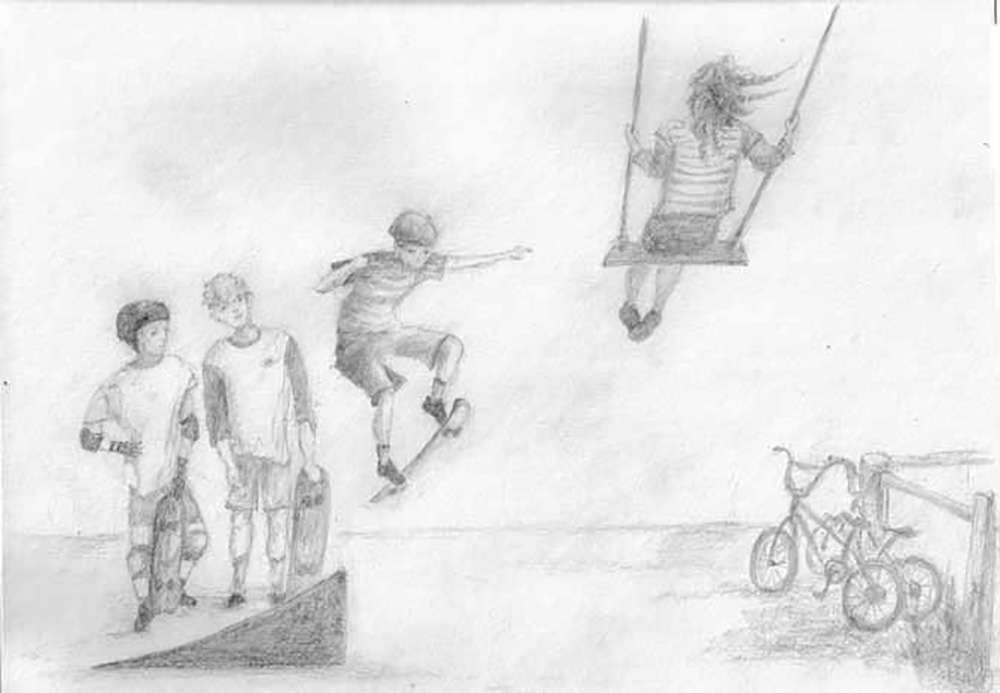
From the moment they are born, we guide our children along life’s wondrous, rocky path, shepherding them lovingly through the vulnerable early stages of their development. We help them navigate daily physical and emotional challenges and nurture and harbor them as they gradually gather the strength and skills to function on their own. We try our best to shield our toddlers from negative influences in a tumultuous, ever-changing world and praise them often to buoy their self-esteem. We do this because we want them to venture beyond the loving boundaries of family life with self-confidence and determination. We do this because, as parents, we are our children’s first coaches.
As our children grow into physically active, upright beings and we introduce them to sports, we pass the coaching baton to others, hopeful that while playing sports with their peers, our kids will be taught new skills, make friends, and develop a passion for exercise. We want them to embrace the social positives of playing competitively with others because we believe that youth sports will provide an environment where they can have fun and develop in a healthy way. We are seldom prepared for what can happen next.
Many of us are swept up in a seductive swirl of expectations and dreams of success and even stardom. Though we truly mean to shield our kids from physical and emotional stress, we may inadvertently thrust them into a fast-paced, pressure-filled arms race: a toxic youth sports culture that can sometimes catch us all up in a fervor of comparison and competition, a culture that promotes early induction of children into expensive travel teams and encourages sports specialization at too early an age. Carried away by this current, we risk becoming something unrecognizable, even to ourselves—judgmental, stressed-out, win-at-all-costs fanatics. As one parent said, “Jimmy really needs to work on his three-point stance. We’ve hired a private coach so that he has every chance of making the elite squad when he turns ten.”
Is this what we as a society, or individually, really want? To shove our kids down such a narrowly defined pathway to achievement? Haven’t we lost sight of our original intention—to expose our kids to fun, educational activities? Why do we become so vested in that gleaming trophy we hope to see them hold at the end of tournament weekend? We know this is not the only thing that truly mattered to us—and them. Wide-eyed and eager to please, our children absorb all the antics and overly zealous behavior of parents, teammates, and coaches caught up in this performance hoopla. The obvious risk is that the wrong message sinks into their impressionable minds: that success is measured in victories and championships, not skill development and teamwork. What we are trying to avoid is the mixed message that Mom and Dad love you no matter what, but they are happier if you win. They are excited and even thrilled if you win. Kids get it.
In this chapter we explore a parent’s role in developing and tailoring a child’s early sports experiences as his or her first coach. Just as more and more parents today are seeking alternatives for their children in education, from homeschooling and charter and voucher schools to retooling curricula in public schools, we believe parents are ready to explore alternatives in youth sports. In this vein we rethink the rules and structures of adult-oriented organized sports and provide parents with guidance so that they may home-coach their children and also form communities of like-minded parents who want to provide their kids with healthier sports experiences. We offer suggestions for exercises, activities, and programs that are fun and developmentally appropriate for younger kids.
This chapter focuses predominantly on Stage One (five- to eight-year-olds) and Stage Two (nine- to eleven-year-olds) of the Whole Child Sports developmental continuum (see “Finding a Road Map to Change with a Focus on Developmental Stages” in chapter 1). Whole Child Sports encourages parents to introduce children ages !ve to eleven to fun games that develop their movement skills, balance, and coordination (the skills outlined in Stages One and Two). These are not outcome oriented competitive games; the emphasis is on fun and skill development. We strongly recommend “home sports schooling” for this age group and offer specific examples of backyard games and park activities that can help develop balance and movement skills, as well as creative thinking, but are fun focused and don’t require too much adult involvement and direction.
When kids reach the threshold age of eleven or twelve, the time comes for parents to let go a little bit and entrust their children’s athletic development to more experienced guides (Stage Three: twelve- to fifteen-year-olds). We do not advocate handing your child over to just anyone, however; choosing the right coach and sport or sports for your child is truly important. Helping children develop speed, balance, and agility can set them on course to enjoy years of wholesome activities as they grow into healthy, happy, accomplished athletic young men and women. ♦
From Kim John Payne, Luis Fernando Llosa, & Scott Lancaster. Beyond Winnning: Smart Parenting in a Toxic Sports Environment(Lyons Press, Connecticut, 2013)
